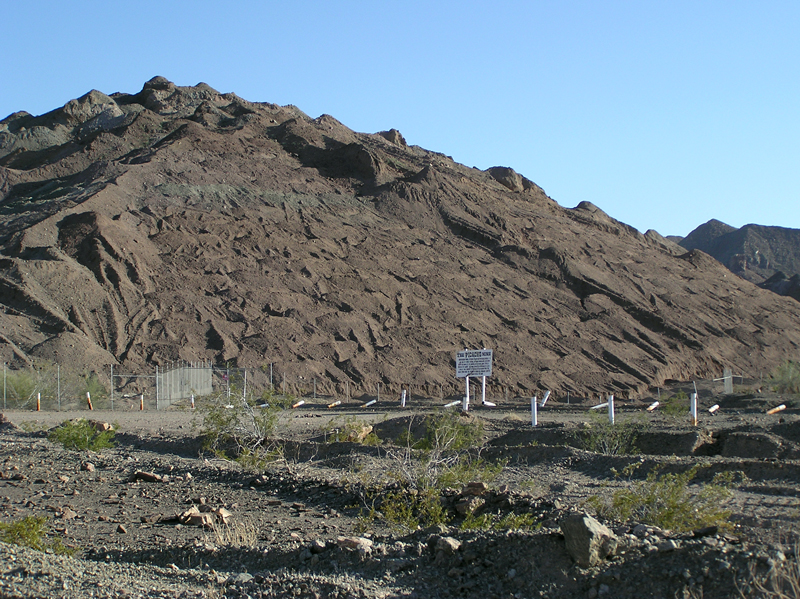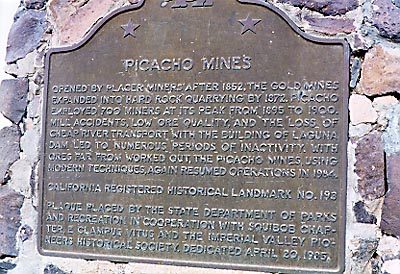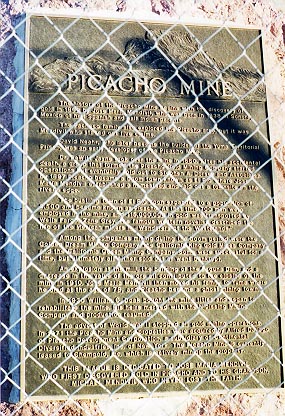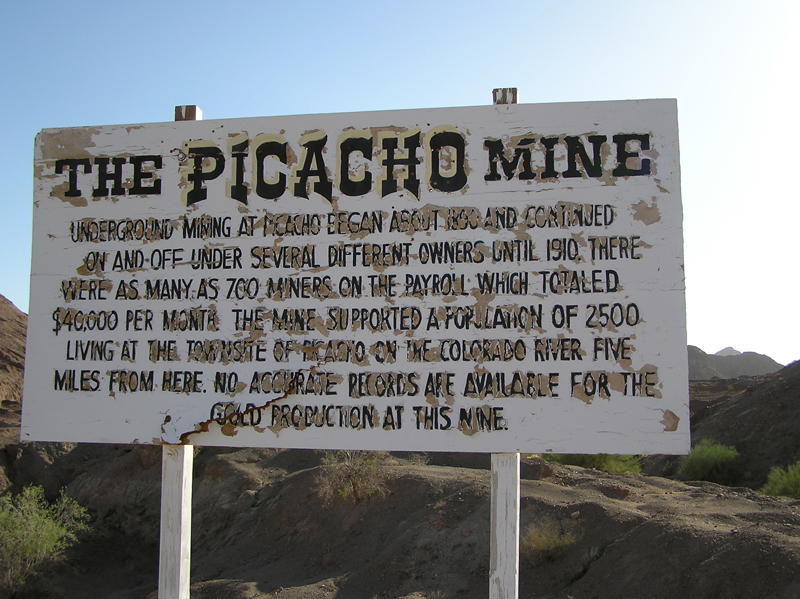Landmark information
- Location:
Site located Picacho Rd, 14.5 mi after pavement ends, approx. 18.2 mi N of Winterhaven; plaque located .4 mi N of site - Plaque:
Official State Plaque - Site:
Existing - Date First Visited:
5/21/1998 - Date Most Recently Visited:
6/15/2004 - GPS Coordinates:
N 32 58.313, W 114 38.101
About this landmark
Plaque text:
Picacho Mines
Opened by placer miners after 1852, the gold mines expanded into hard rock quarrying by 1872. Picacho employed 700 miners at its peak from 1895 to 1900. Mill accidents, low ore quality, and the loss of cheap river transport with the building of Laguna Dam led to numerous periods of inactivity. With ores far from worked out, the Picacho Mines, using modern techniques, again resumed operations in 1984.



